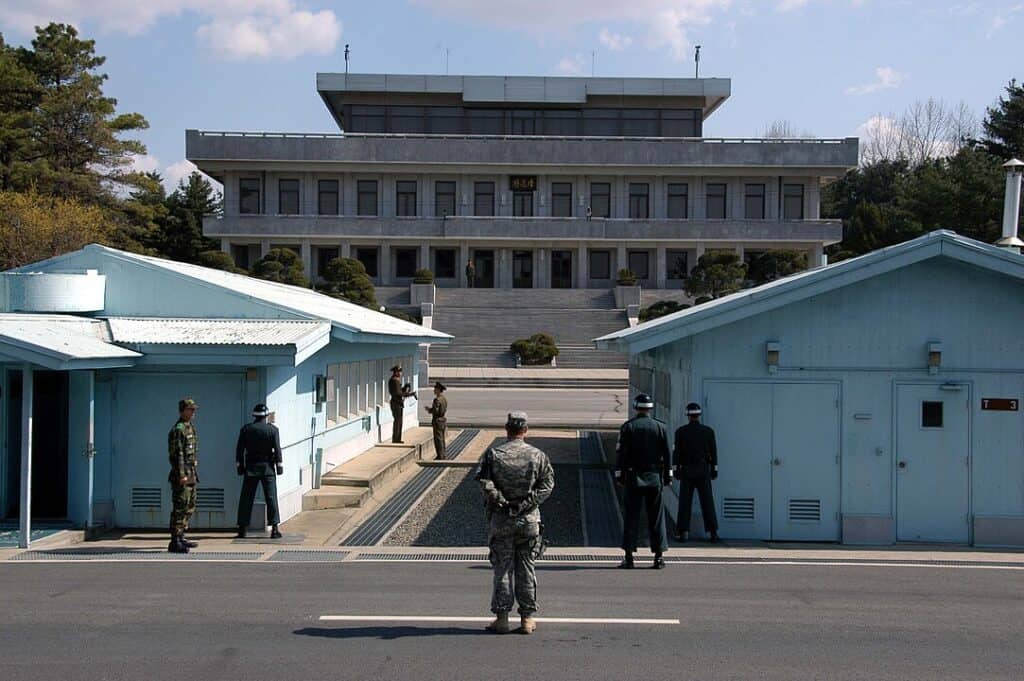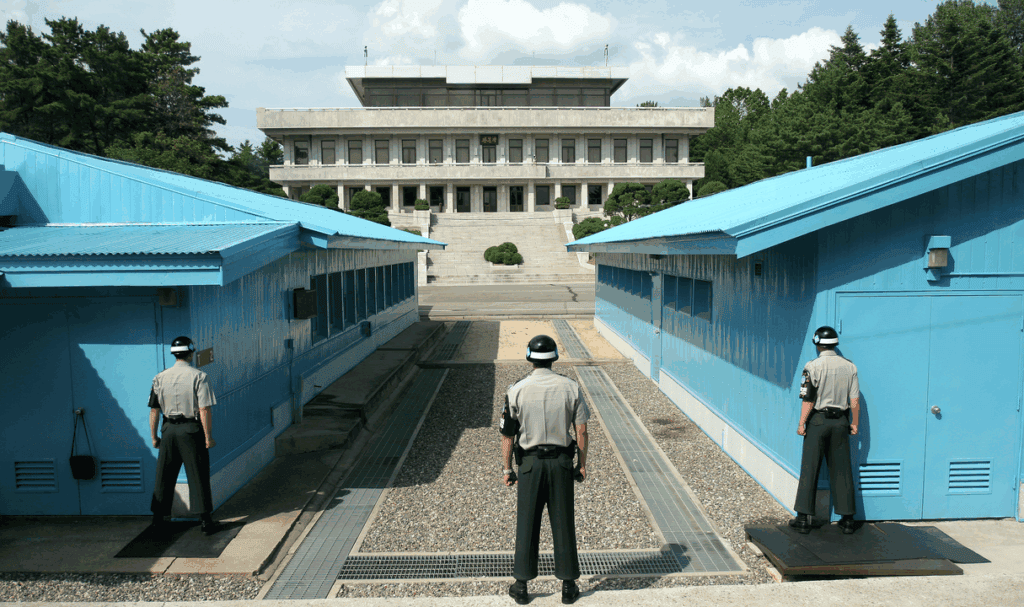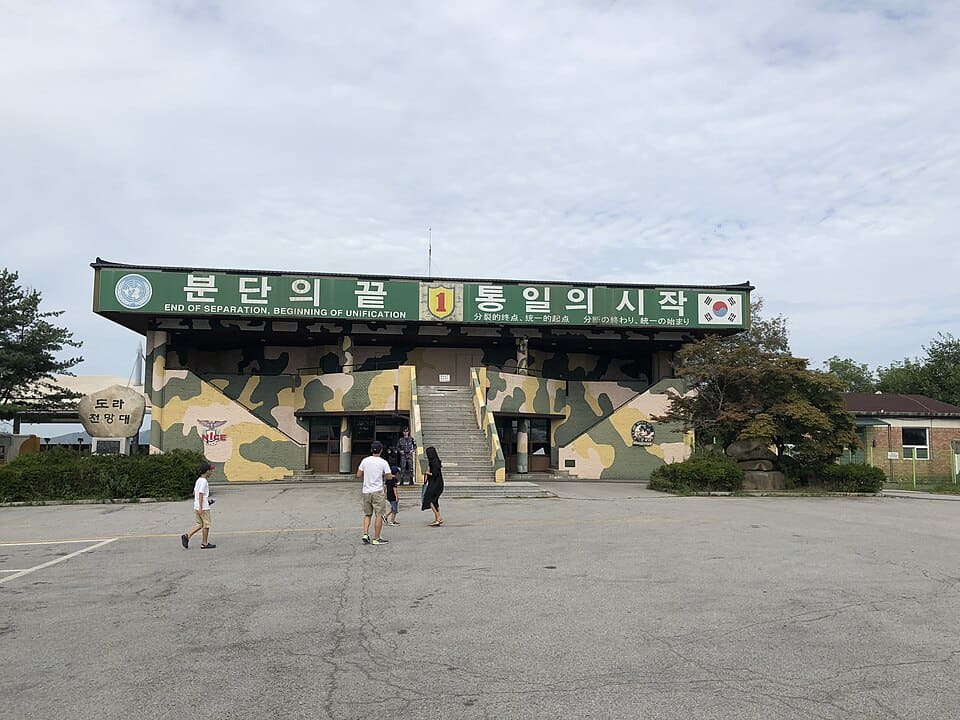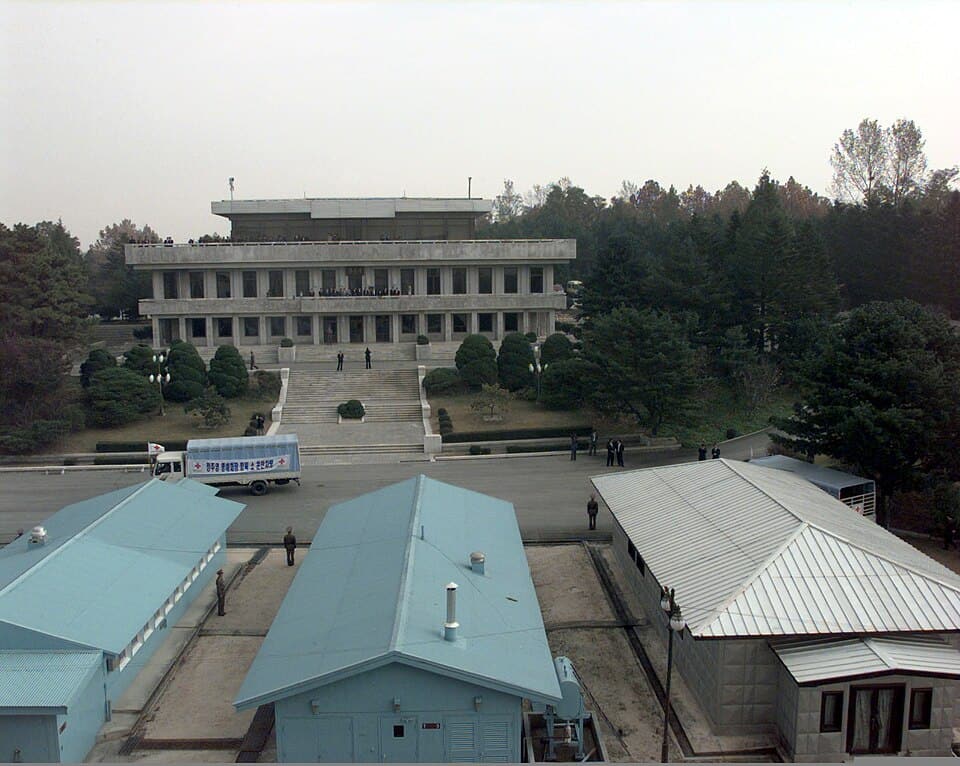We may earn money or products from the companies mentioned in this post. This means if you click on the link and purchase the item, I will receive a small commission at no extra cost to you ... you're just helping re-supply our family's travel fund.

You feel it before you see it. The bus quiets, the chatter thins, and a strange stillness settles over the road. Watchtowers blink from low hills. Barbed wire traces the river like a scar. It looks ordinary and unreal at the same time, a landscape that refuses to let your heartbeat slow.
Here is the context that brings the moment into focus. The Demilitarized Zone is a buffer born from an unfinished war, four kilometers wide and stretched across a peninsula. People come to look across a line that is more idea than fence. What follows is less about danger and more about rules, ritual, and the careful choreography of a frozen conflict.
Crossing Into the Buffer Zone

The approach starts with paperwork and briefings. Your passport is checked more than once. A guide repeats the do and do not list until it becomes a rhythm. No pointing. No sudden movements. Stay with the group. The closer you get, the more your attention sharpens.
Outside, the landscape looks calm. Rice fields and low ridges roll toward the horizon. Then the signs change, the fences lift, and the air feels thinner. You understand that quiet can carry more weight than noise.
Rules That Shape Every Step
You learn that the DMZ runs along the Military Demarcation Line, with guard posts set back on both sides. The space is heavily monitored, yet it has also become an accidental sanctuary for cranes, deer, and foxes. Nature took the gap humans left and filled it with life.
Dress codes are strict. No ripped denim, loud logos, or camouflage. The idea is simple. Do not become a prop in someone else’s photos.
Cameras are allowed in designated places. A soldier may ask you to shoot from specific angles. You accept the direction without debate.
The rules feel firm rather than harsh. They keep the theater from becoming chaos. They remind you that this is a meeting point, not a theme park.
The First Glimpse Across the Line

Your first clear view of the North often happens from a platform with fixed binoculars. The land across looks familiar and distant, villages painted in muted colors, a flagstaff cutting the sky. It is close enough to study yet far enough to remain abstract. The mind tries to turn it into an everyday border. It is not.
What you feel is restraint. You could wave. You do not. You could stare. You limit yourself. The etiquette of the place holds you steady.
Panmunjom’s Blue Rooms

At Panmunjom, the blue conference buildings sit like toy blocks on a gray stage. A concrete strip marks the line that divides the room and the world. Here, meetings take place at a table that straddles the line. The symbolism is heavy and precise.
Sometimes you step inside with an escort. The air is cool and thin. Every footfall seems louder than it should.
Guards stand motionless. Their presence is a silent rulebook, written in posture and focus.
Outside again, the geometry reads like a diagram. Platforms, cameras, and lines define where power is performed rather than spoken.
Dora Observatory and the Border Landscape
From Dora Observatory, the border spreads into a map you can read with your eyes. Forest patches, river bends, and watch posts mark a frontier without neon drama. You learn to pick out details that would fade anywhere else. A road that goes nowhere. A village that is not quite a village. The distance keeps its secrets but still allows a clear lesson. Borders are stories people tell with concrete and habit.
The view also rewrites scale. What looks narrow on a news graphic feels wide under open sky. Space can be its own form of pressure.
The Third Tunnel and the Weight of Earth
The tunnel visit replaces views with echoes. You descend along a steep ramp, don a hard hat, and walk through damp rock. The air smells of minerals and history. The passage is cramped and low, carved by hands you cannot see. Every drip and scrape lands harder than it should.
At the end, a barricade seals the way. You look through a grate at more rock and empty dark. The lesson is blunt. The earth remembers effort even when plans fail.
Soldiers, Protocol, and Silence
Soldiers on both sides present a human frame for the line. They move with practiced economy. Their faces are neutral by design. You read discipline rather than emotion. It feels like standing in a library where the books are not words but stances and distances.
Briefings cover emergency steps that likely will not be needed. Stay calm. Follow instructions. The advice is simple because it has to work under stress. You leave grateful that routine exists where politics often does not.
The silence that follows you back to the bus is not fear. It is respect. You carry the weight of a place that runs on restraint.
Practical Notes for Travelers
Tours book out during holidays and can be paused during periods of tension. Schedules change, and some sites open or close with little notice. Bring your passport, wear plain clothes, and keep your hands to yourself during briefings. Expect multiple checkpoints and a firm pace. If you want photos, ask first and follow the angles given.
Plan your mindset as much as your route. The DMZ is not about thrills. It is about learning to listen to a border that speaks in rules, lines, and quiet.